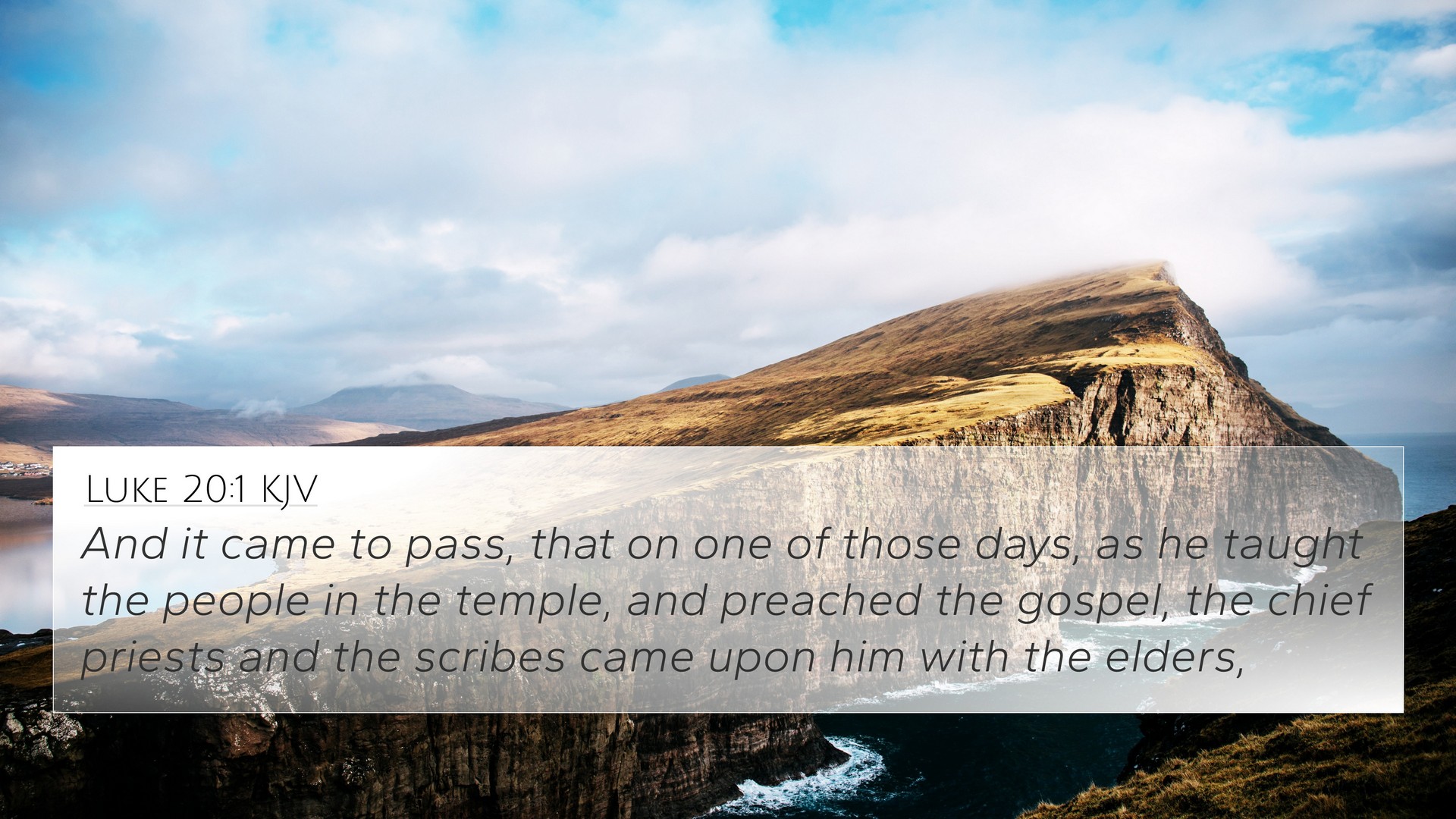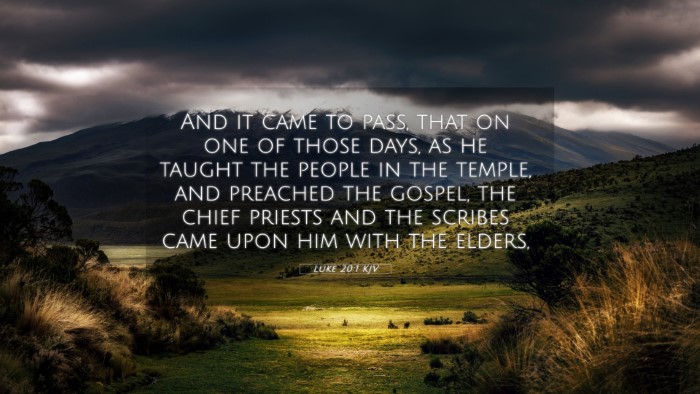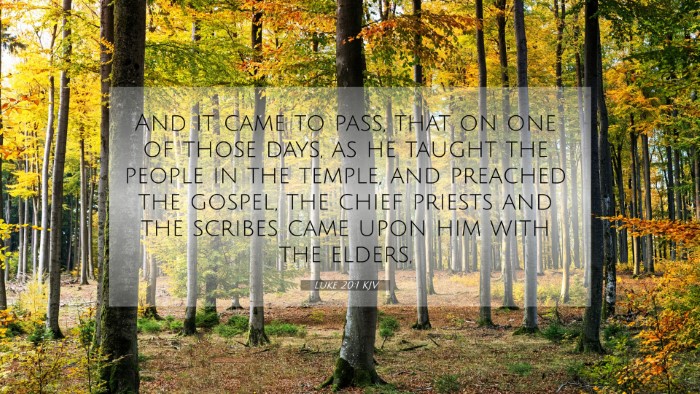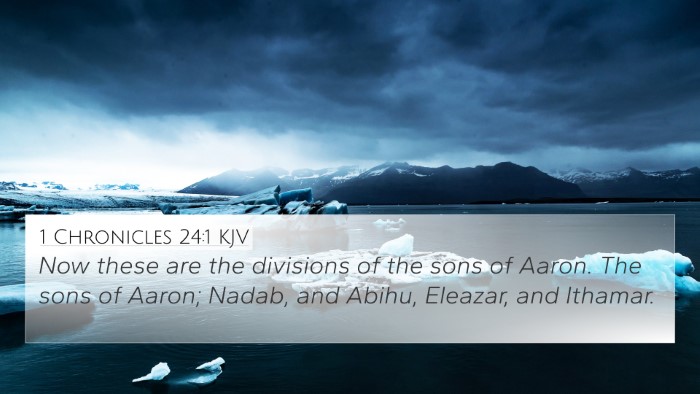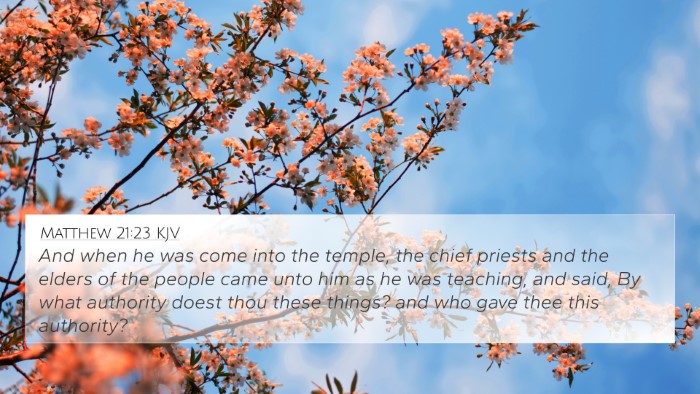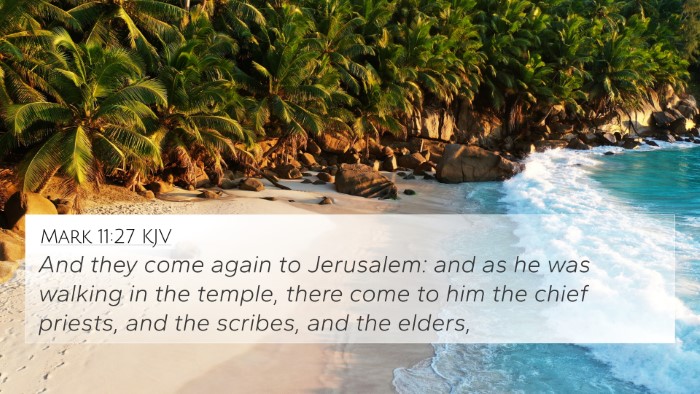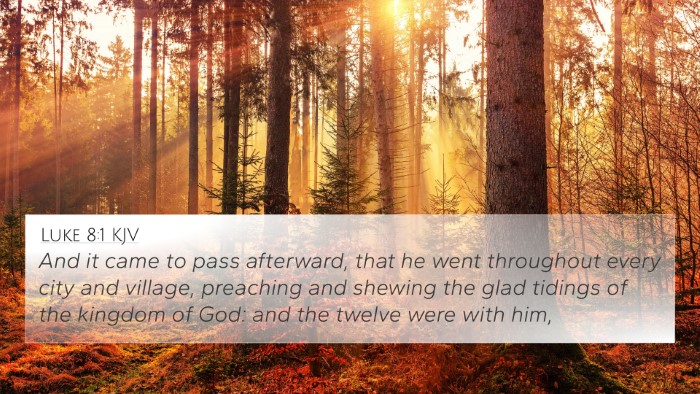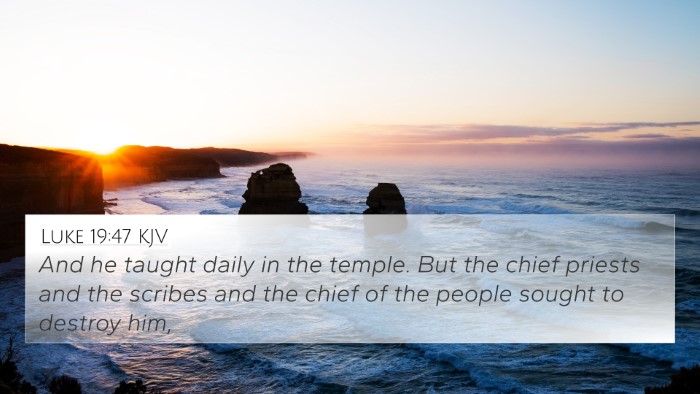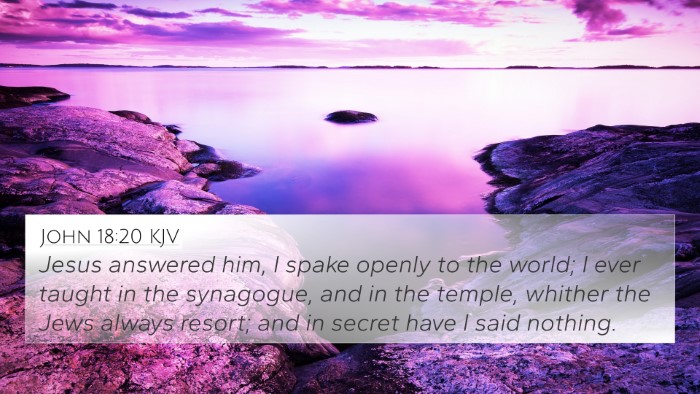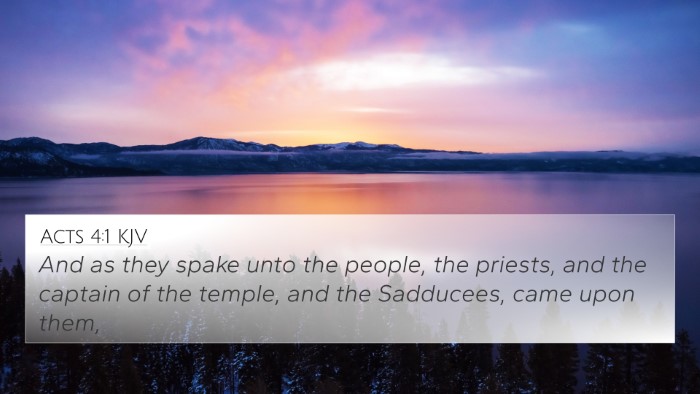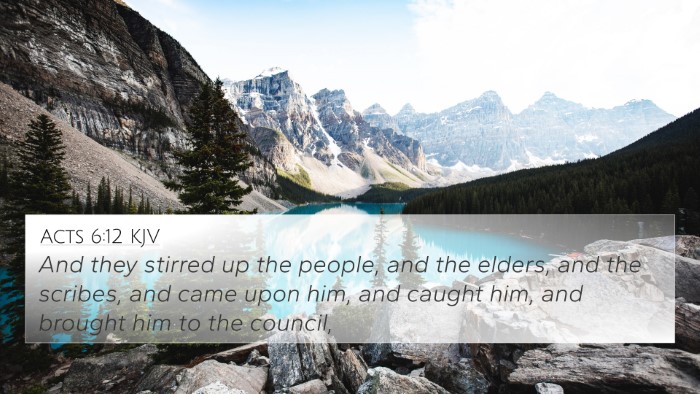Understanding Luke 20:1
Luke 20:1 states:
"And it came to pass, that on one of those days, as he taught the people in the temple, and preached the gospel, the chief priests and the scribes came upon him with the elders."
Summary of Luke 20:1
This verse describes a pivotal moment in the ministry of Jesus, occurring in the temple where He was actively teaching the people and declaring the gospel. The arrival of the chief priests, scribes, and elders signifies a confrontation that was rooted in tension between Jesus and the established religious authorities.
Commentary Insights
Matthew Henry's Commentary
Contextual Setting: Henry emphasizes that Jesus was teaching and preaching the gospel, illustrating the importance of His message and mission. The temple serves as a critical setting not only for Jewish worship but as a stage for revelation and confrontation.
Opposition Emerges: Henry notes that the religious leaders approached Jesus with intent to challenge His authority. Their presence signals the growing conflict between Jesus' teachings and traditional Judaism.
Albert Barnes' Notes
The Nature of Jesus' Teaching: Barnes highlights that Jesus taught in a manner that was both authoritative and appealing to the masses. His message was essential in drawing a distinction between action in faith versus mere ceremonial adherence.
Challenge from Authorities: Barnes explains that the leaders' attempt to question Jesus was symptomatic of their insecurity and fear about losing control over the people’s religious lives.
Adam Clarke's Commentary
Significance of the Temple: Clarke interprets the temple as a symbol of the religious structure, where the confrontation embodies the final struggle between Jesus and the religious establishment. His active teaching in such a place is a profound declaration of His messianic role.
Cultural Implications: Clarke also notes the significance of the gospel being proclaimed, which indicates that the message of salvation was not limited to those traditionally deemed worthy by the religious elite.
Bible Verse Cross-References
- Matthew 21:23-27: This account provides a direct comparison of the challenge posed by the chief priests to authority and the nature of Jesus' responses.
- Mark 11:27-33: Similar to Matthew, this passage emphasizes the confrontation and reveals Jesus’ wisdom in responding to His accusers.
- John 2:19: Here, Jesus speaks of the "temple" in relation to His body, foreshadowing His death and resurrection—the ultimate fulfillment of the temple’s purpose.
- Luke 19:47-48: Prior to this event, Jesus was already teaching in the temple and facing opposition, showing a pattern of conflict with religious leaders.
- Acts 4:1-3: This passage reflects the ongoing hostility Christians faced from religious leaders, indicating the early church's continuation of Jesus' mission.
- Matthew 5:17-20: Jesus establishes fulfillment of the law, providing a lens through which the confrontation can be understood in terms of continuity and reform.
- Isaiah 61:1: This Old Testament prophecy speaks to the mission of Jesus, which He was enacting in the temple, thereby linking prophetic scripture to His actions.
- Luke 4:18-19: Jesus reads from Isaiah in the synagogue, proclaiming His role, which sets the foundational context for His teaching and gospel proclamation.
- John 7:25-27: Discussion amongst the people about Jesus’ origin links a broader understanding of His identity amidst conflict.
- Romans 1:16: This verse reinforces the significance of the gospel message, affirming its power among all peoples, which contextualizes Jesus’ proclamation in the temple.
Thematic Bible Verse Connections
Luke 20:1 is interwoven with themes of authority, conflict, and fulfillment. These themes can be explored through various cross-references that offer a deeper understanding of Jesus’ role and the opposition He faced:
Authority: The question of authority is central to Luke 20:1, connecting with passages like Matthew 21:23-27 and Mark 11:27-33 where the source of Jesus' teachings is challenged.
Prophetic Fulfillment: The interrelation of the Old and New Testament is crucial, as seen in Isaiah 61:1, affirming Jesus’ mission and the purpose of His teachings in the temple.
Conflict with Religious Leaders: The scrutiny Jesus faced highlights the tension between the Gospel message and institutional religion, mirrored in passages like Acts 4:1-3.
Using Bible Cross-References for Study
Understanding the connections between Bible verses enhances comprehension and interpretation:
- Tools for Bible Cross-Referencing: Utilizing a Bible concordance or cross-reference guide can help identify thematic connections throughout scripture.
- How to Use Bible Cross-References: Exploring related verses can deepen insight into a passage, facilitating a comprehensive understanding of key themes.
- Comprehensive Bible Cross-Reference Materials: Many resources are available for those engaging in cross-referencing Bible study, making it easier to find verses that relate to specific themes or teachings.
Conclusion
Luke 20:1 serves as a significant moment in Jesus' ministry, symbolizing the tension between His message and the established religious framework. Understanding this verse through various commentaries enhances our grasp of the complexities in Jesus' teachings and the environment in which He operated.
The use of cross-referencing biblical texts not only enriches our understanding of this particular verse but also shows the interconnectedness of scripture—offering a pathway to deeper spiritual insight and growth.
